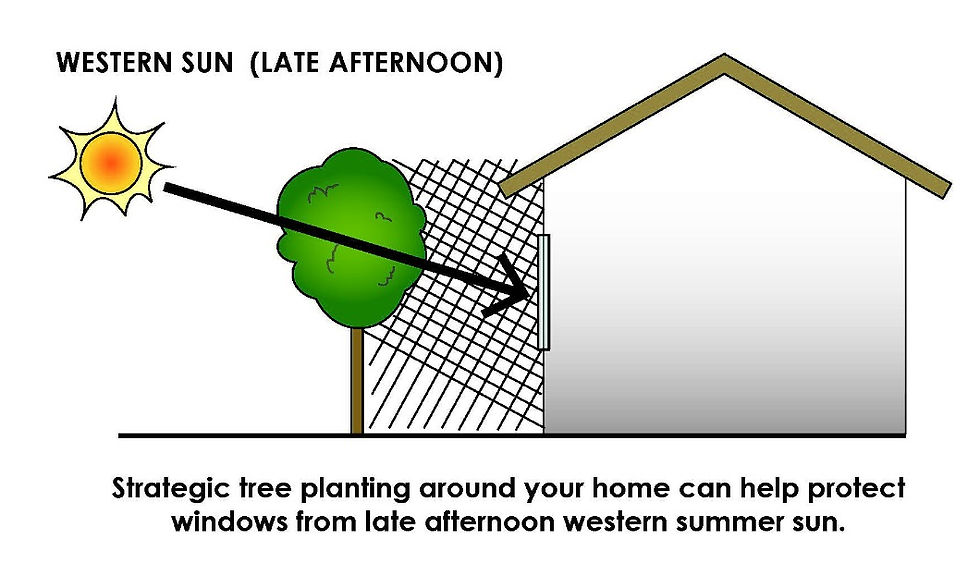How to Use the Earth To create a Sustainable Design
- Mykaela Scarpace
- Apr 7, 2022
- 3 min read
HOW TO USE 4 OF THE EARTH’S NATURAL ELEMENTS TO MAKE YOUR PROJECT MORE SUSTAINABLE
One of the most basic rules in sustainability is “use what you have.” While this rule might be aimed at individuals trying to live a more eco-friendly lifestyle, we think this rule can apply to architecture also. Some of the most effective sustainable design strategies use what the earth has. In today's sustainability series, we're going to explain how using 4 of the earth’s natural elements can improve the performance of your design. After all, these natural elements are free so we should take advantage of them!

SUN


Taking advantage of the sun can help conserve energy in your home by reducing lighting and heating usage. Some strategies for using the sun to light your home include building orientation, strategic window placement and bright interior surfaces. Considering the sun’s location in the design process will allow the sun’s rays to come into your building and reflect off surfaces, increasing the daylight in the space. Building orientation and strategic window placement can also help take advantage of the sun’s heat. It is important to pair these strategies with solar shading, like a trellis or large tree, that blocks the heat in the summer but lets the sun’s rays through in the winter.
Other benefits
Light has many biological and psychological benefits that can impact the wellbeing of humans. This includes stabilizing circadian rhythms, improving mood, decreasing depression and enhancing cognitive performance.
Summary
Conserve Energy
Natural lighting
Heating
Happiness
Better sleep
WIND

Passive ventilation or natural ventilation takes advantage of the wind to circulate air into and out of a building. This strategy is achieved by including operable windows, skylights and/or vents in the design. Fresh outdoor air will be brought into the building, serving as a cooling system while also providing clean air for breathing.
Strategies for optimizing ventilation include placing operable windows on two or more walls in a room for cross ventilation and placing operable windows up high for hot air to escape. A well-designed passive home can be used during the hot and cold months and can benefit homes in many different climates.
Summary
Cooling
Indoor air quality
WATER

Rain water harvesting takes advantage of the rain by collecting water run-off from the roof and storing it for later use. Typically this is done by connecting roof gutters to some kind of barrel or other storage container. This water can then be used to water your garden, wash your car or, depending on how much water you are able to store, supply your entire household.
Other benefits
Rainwater harvesting helps reduce stormwater runoff, prevents flooding around your home and serves as a back-up source of water for emergencies.
Summary
Reduce stormwater runoff
Recycle water
Prevents flooding
Water collection for emergency use
EARTH

Planting native plants is one way to take advantage of the existing Earth around your home. Native plants are those that are adapted to the local climate and soil conditions where they naturally occur. Choosing to use these types of plants in your garden and yard will help reduce water usage, which is especially important in San Diego.
Strategically planting trees can also provide indoor comfort. Decidious trees, the ones that lose their leaves in the winter, can be planted to block harsh summer sun and bring in warm sun during the winter. Planing evergreen trees in areas that have extreme winds or noise can block uncomfortable conditions. Using landscaping to create a comfortable home is both efficient and beautiful!
Other benefits
Native plants do not require fertilizers or pesticides, eliminating the need for these chemicals. They also help prevent erosion, reduce air pollution and provide food and shelter for wildlife. Many of these concerns are especially important in San Diego, but native planting will benefit the environment in any climate.
Summary
Native landscaping
Reduces water use
Attracts local birds and pollinators
Reduces need for pesticides
Prevent erosion
Reduce pollution
Strategically placed landscaping
Blocks harsh sunlight
Brings in warm winter sun
Blocks uncomfortable winds
Reduces noise from traffic or neighbors
Working with the earth's elements is one of the easiest and most efficient ways to create a beautiful design from the very start of the design process. I challenge you to try to encorporate at least one of these principles in your next design project. If you're a homeowner, you can discuss these concepts with your architect to make sure you're getting the best design possible!










Comments